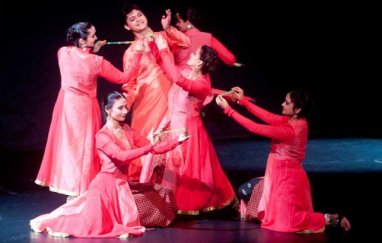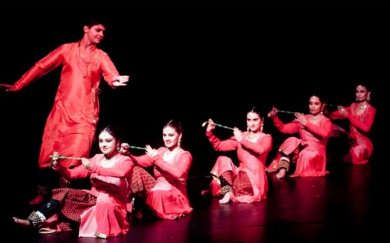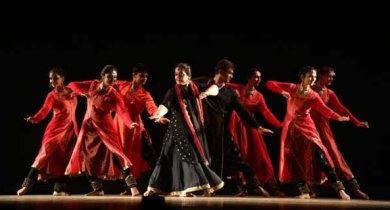
|   |

|   |
'An Enchanting Ode': From a story to a concept - S.D. Desai e-mail: sureshmrudula@gmail.com May 8, 2016 While Ishira Parikh and Maulik Shah, themselves a lovable dancing couple, sing praises of the togetherness of Radha and Krishna in ‘An Enchanting Ode’, Baansuri becomes the leitmotif. The evenly flowing lyrical rhythm it develops with its poetry, music and dance soon enough gets enhanced as gradually the forms of Radha and Krishna seem to melt away letting the eternal love they symbolize and the harmony it permeates to remain in the fore. Conscious choices made here make the Ode a distinctively different dance performance. It draws from the Radha-Krishna tradition and yet keeps away from predictable verisimilitude with the omnipresent flute and the crown with a peacock feather atop, a peetambara and a spiritual look, familiar scenes of intimacy, recognizable gopis and chhedchhad, a sprinkling of folksy songs, and the like. Instead, it takes off from the essence of a story and moves on to a concept with an intelligible contemporary touch. 

The nayak-nayika and their sakha-sakhi vrund are all clad in the likeness of chaniya-chori (Anuvi) comfortable for the wearer and refreshing to the viewer today. The mayurapichchh is noticed but once momentarily initially and a green tiny bansuri, one with the motif of love, from time to time recurs, as in coordinated action in a flow of movement, symbolically changing hands -practically every sakha and sakhi having it in hand and having a feel of it as it were for a while! And yet, rather even with all this, the experience the eye, the ear and the soul find coming across is classical.  Neeraj Parikh’s uninterrupted music with the sitar, the flute and percussion sounds in particular creating the right ambience anchors movement. Kinship under its sway develops and binds together Radha’s lyrically slow padachalan akin to the flowing water of the Yamuna, her mugdha and Krishna’s benign complementary glances, the group of friends (Jigna, Raina, Anjani, Anushri, Naisargi, Kadam) forming up into a glowing cluster partaking of their joy, and welcoming elements of the surrounding – the river, the flowers, the birds, the cows and the space offering freedom. Poetry is an element of the Ode that lends it relative richness. The soft syllables in Bansuriya taari chitavan chor... and Baaji re baaji venu bana baaji... gently carry the notes, pleasing to the ears, and the singers (Mirande, Ami, Prahar) melodiously bring them across to the viewers. The lines written by Ishira remind one that she inherits both the literary and musical sensibility from the paternal side. In fact, yet another element emerges, unintended perhaps, from the eminently watchable choreography of the dance piece. At times, for a few seconds, the choreography assumes the quality of a painting. In this, the light designs (Parth) make a contribution along with the colour and designs of the attire. Aanart Dance Company’s An Enchanting Ode (Tagore Memorial Hall, April 26), makes a contribution to the emerging neo-aesthetics in dance for contemporary viewers. Dr. S.D. Desai, a professor of English, has been a Performing Arts Critic for many years. Among the dance journals he has contributed to are Narthaki, Sruti, Nartanam and Attendance. He guest-edited Attendance 2013 Special Issue. His books have been published by Gujarat Sahitya Academy, Oxford University Press and Rupa. After 30 years with a national English daily, he is now a freelance art writer. |